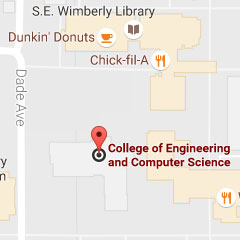Concrete Cylinder
Overview
The intent of this competition is to design a 4-inch diameter, 8-inch long concrete cylinder with a specified design strength of 7,000 psi. Prior to testing, teams will submit their technical report, and the cylinder will be evaluated for compliance with the relevant ASTM standards.
Objective
Design a compression concrete cylinder specimen with a specified required strength of 7,000 psi. The cylinder dimensions are: 4-inch diameter x 8-inch height (+/- 0.1 inch). The goal is to a have a design concrete mix to reach the target strength of 7,000 psi. A compression strength below 7,000 psi will disqualify the team. Points will be deducted for excess strength over the 7,000 psi target. The cylinder shall be no more than 28 days old on March 17, 2017.
Eligibility
Each team may consist of a maximum of up to four (4) members, one (1) of which may be a graduate student. Each team will have a captain who is responsible for submitting the entry and a paper copy of the technical report during registration. Each team may only submit one cylinder. Submitted cylinders must meet all design specifications. Compliance evaluation will be conducted at least 24 hours before testing. Team captains will be notified by cell phone if a compliance issue has been identified. Failure to meet a specification requirement will result in disqualification.
Submittals
All technical reports and concrete cylinders must be submitted upon arrival to the conference judges at the time of registration. Reports must be bound or stapled and presented on 8.5” x 11” paper. Cylinders must have the name of the university clearly visible.
Each team will construct one cylinder prepared no more than 28 days prior to the competition. A mix design spreadsheet must be submitted electronically by Feb. 24, 2017 at 11:59 p.m. EST to 2017asce@fau.edu.
Material Specifications
The construction and testing requirements are summarized as follows:
- Portland cement must meet ASTM C150, but may be any subtype.
- A maximum of 50% of the mass of the total cementitious material can be Portland cement.
- Other cementitious materials must be made up of one or more of the following:
- Fly Ash/Natural Pozzolans (ASTM C618)
- Slag Cement (ASTM C989) or Silica Fume (ASTM C1240)
- Additions of non-ASTM C150 cements as part of the cementitious materials are not permitted.
- The water to cement (w/c) ratio must not fall below 0.35 (This does not include aggregates presoaked in water).
- All aggregates must pass the #8 sieve and be retained on the #200 sieve.
- At least one (1) of the aggregate types must be either a sustainable or recyclable material.
- Chopped fiber assimilated in the mix design must not exceed 2% by volume.
- The chopped fibers must be greater than 0.5 inches and less than 1.5 inches in length.
- Superplasticizers may not be used.
- Any other material used to enhance the structural integrity is prohibited.
- The tolerance on each cylinder dimension is +/- 0.1 inch.
- Cylinders may not be aged more than 28 days at the time of the contest.
- A mix design spreadsheet must be submitted:
Mix Design Spreadsheet Format See the chart in the pdf print file.
Technical Paper
The technical paper shall be 750-1000 words in length and consist of:
- Introduction
- Name of University.
- Names of team members.
- Captain’s name, email address, and cell phone number.
- Material Documentation
- Quantity and dimensions of all materials used in construction.
- Percent water calculation.
- Purchase information of all materials. (Include photocopies of the receipts.)
- Design Methodology and Construction
- Explanation of all design assumptions used in the design.
- Discussion of alternative designs considered.
- Analysis procedures.
- Discussion of the construction sequence.
- Discussion of any problems encountered and overcome.
Appendix. A. References
Appendix B. Concrete Cylinder Competition Scoring Summary Sheet (Note: Appendices do not count against the word limit).
Testing Procedure
Each team will bring its concrete cylinder to the designated testing area at the competition.
- Total weight of the cylinder: Each team will record a weight. Total weight may not exceed 3800 grams.
- Unconfined compression test: The cubes will be subjected to an unconfined compression test to failure.
Judging
There will be a minimum of two (2) judges for the competition. It will be the judges’ duty and responsibility to evaluate the teams fairly and consistently. One (1) student must be present during the testing of the cylinder for the score to count.
Scoring
The teams will be scored based on:
- A team that hits the 7,000 psi objective exactly will receive 75 points. All teams will be ranked by deviation from 7,000 psi (closest to highest). If no team reaches exactly 7,000 psi, then the closest team gets 75 points. 3 points will be deducted for each consecutive ranking thereafter.
- A compression strength below 7,000 psi will disqualify the team.
- Report preparation (professionalism and aesthetics) (25 Points)
Disqualification
Any team that does not abide by the regulations presented above or performs unethically will be disqualified. Cylinders with a mass exceeding 3800 grams or not meeting the dimensional requirements will be disqualified.
Questions
Send questions to 2017asce@fau.edu. Answers will be posted on the Q&A page.


